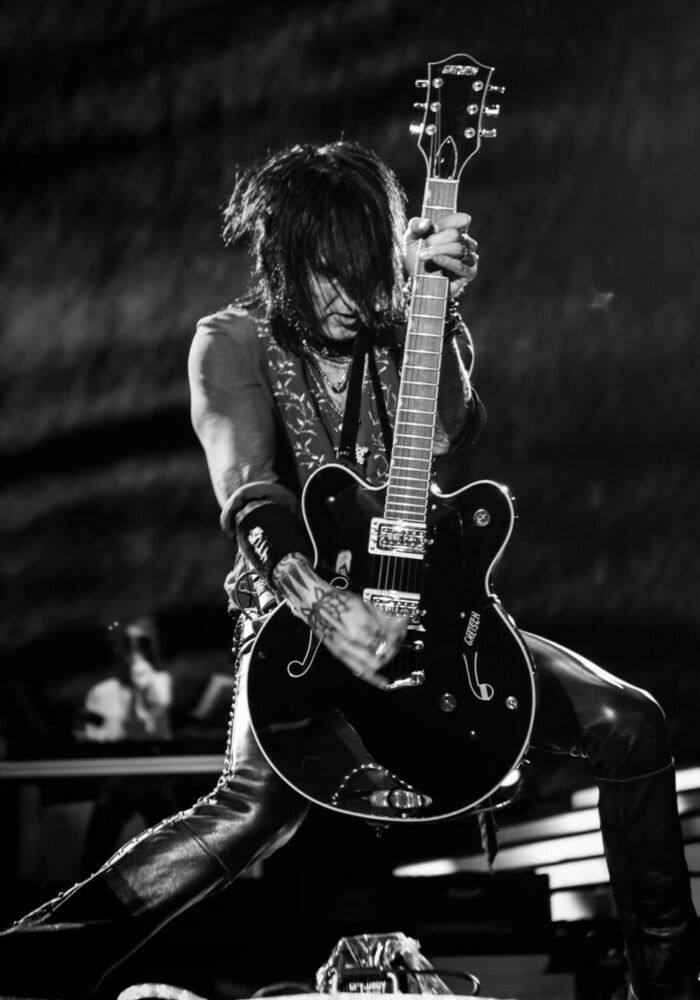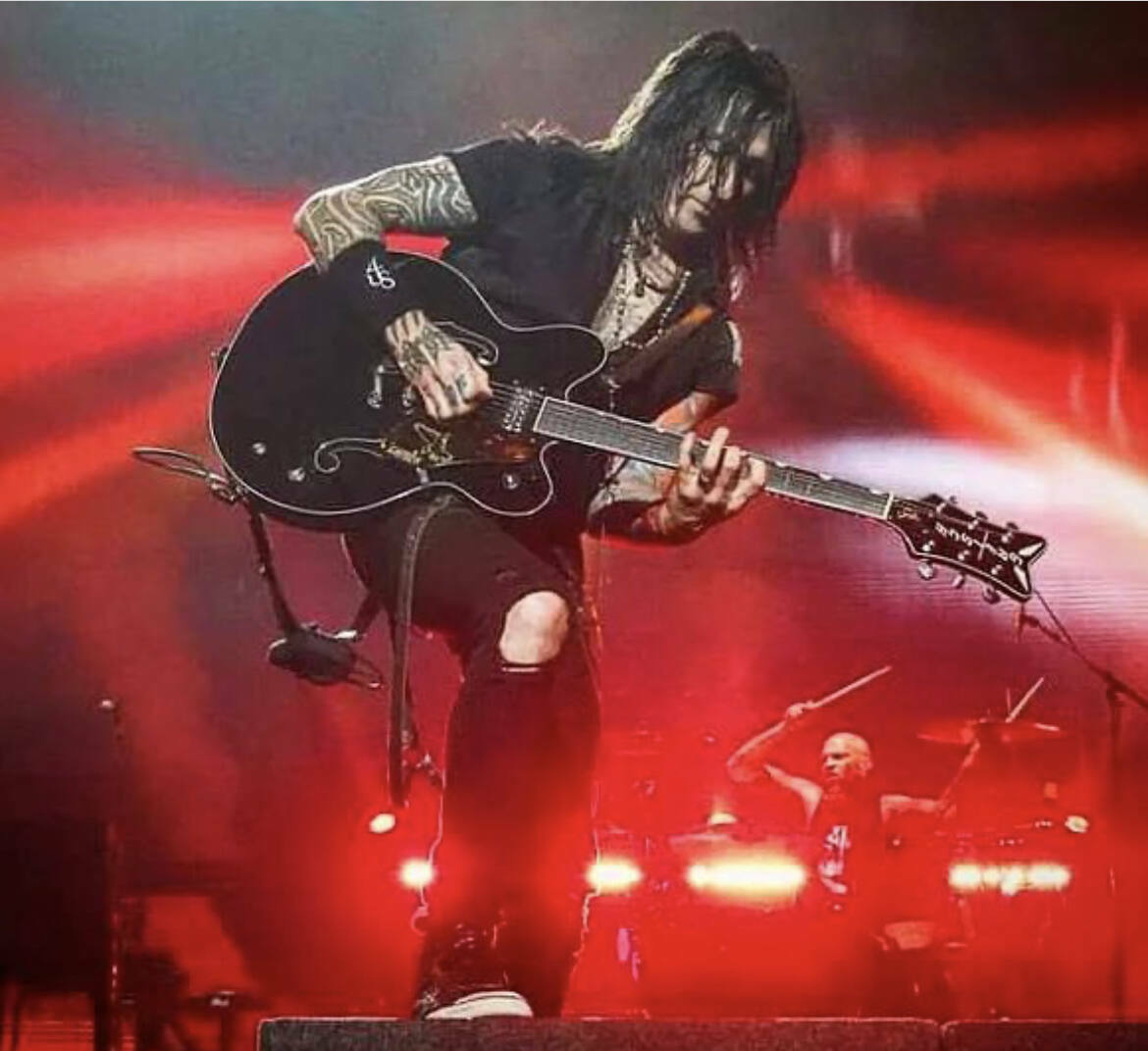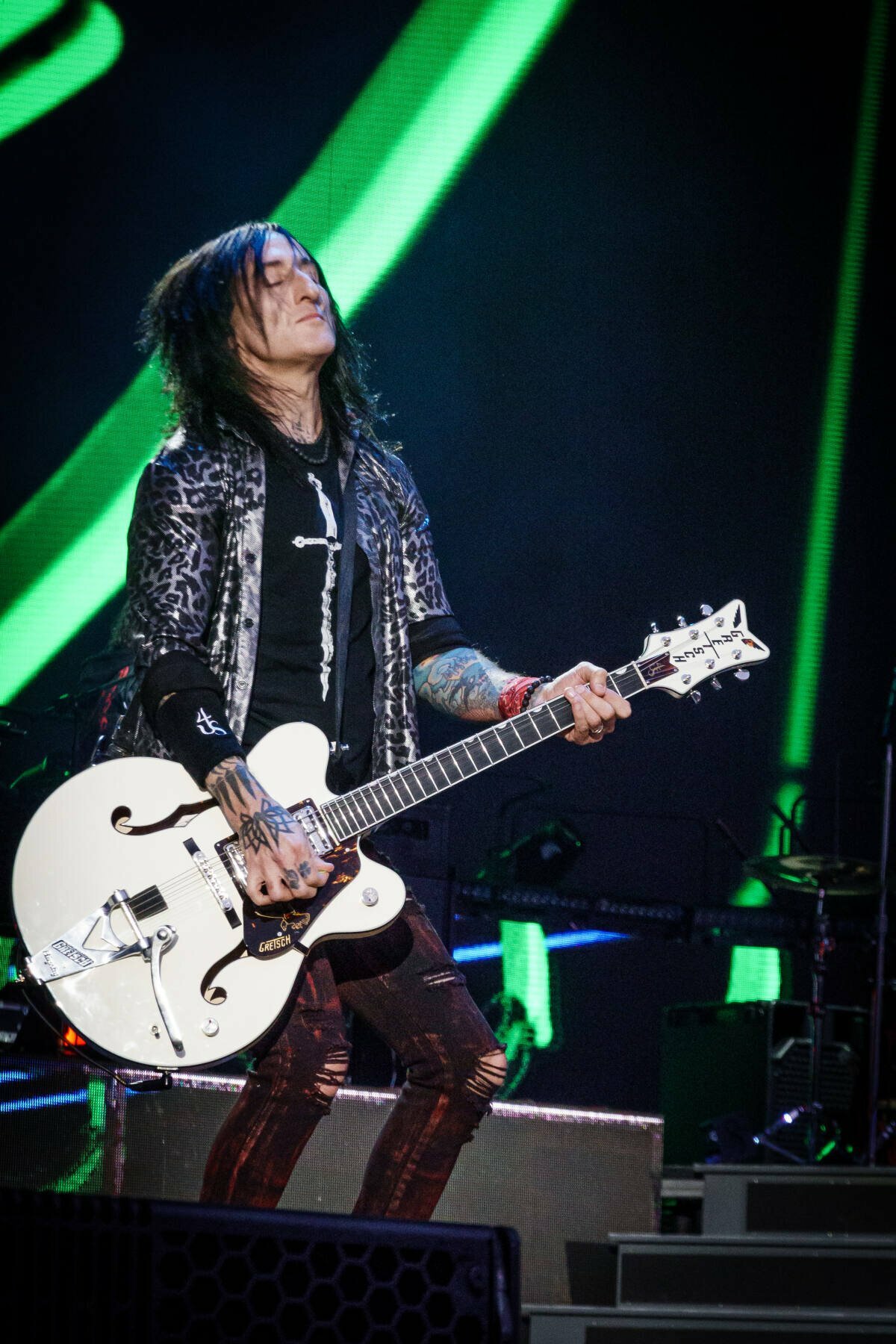Guns N’ Roses guitarist Richard Fortus explains when he became a fan of the band, why live shows are the main way musicians make money these days, and why he uses Celestion speakers.
Asking the question “What type of guitar player is Richard Fortus?” is potentially dangerous, because trying to answer it just might cause one’s word processor to run out of hyphens.
Fortus is currently playing the dream gig of standing onstage next to Axl and Slash in Guns N’ Roses, whom he joined in 2001. He has recorded, toured, or done both with marquee artists across literally every style of modern music, including Rihanna, Enrique Iglesias, Thin Lizzy, Fiona Apple, BT and Crystal Method.
He’s been a full-on band member of The Psychedelic Furs and more recently supergroup The Dead Daisies. His film score contributions include Monster and The Fast and the Furious franchise. Luckily for Headliner, he’s as affable and up for a conversation about music as he is impossible to pigeonhole, and Celestion guitar speakers have been by his side during his entire journey…
Your bio says you were classically trained as a child?
Yeah, I started on the Suzuki Method on violin when I was about four. A bit later I played drums to satisfy my rock ’n’ roll itch but continued playing violin throughout school.
Was your family musical?
My mother sang and played piano. My father was not musical at all. He was an accountant. But he was a partner in a company called St. Louis Music. They made Alvarez and Electra guitars and Crate amps. So, I grew up in that world and was exposed to a lot of music and musicians as a kid.
What was your favourite music growing up?
When I was little, around eight, like every other kid at that time I was into KISS. Then there was Aerosmith, Queen – those were the biggest bands in the world at that time. As I got a little older, 11 or 12, I started listening to a lot of the more art-rock stuff like early Genesis. I was really into Yes, King Crimson, Jethro Tull, bands like that. Of course, David Bowie.
Later still, I got more into the jazz-fusion stuff that started going on. Jeff Beck’s Wired and Blow by Blow period was huge. That led me to things like Mahavishnu Orchestra, Chick Corea with Return To Forever, and the Dregs. So that’s where I was when I started playing guitar – obsessed with players like Robert Fripp, Jeff Beck, Steve Howe, early Santana and Peter Frampton.





